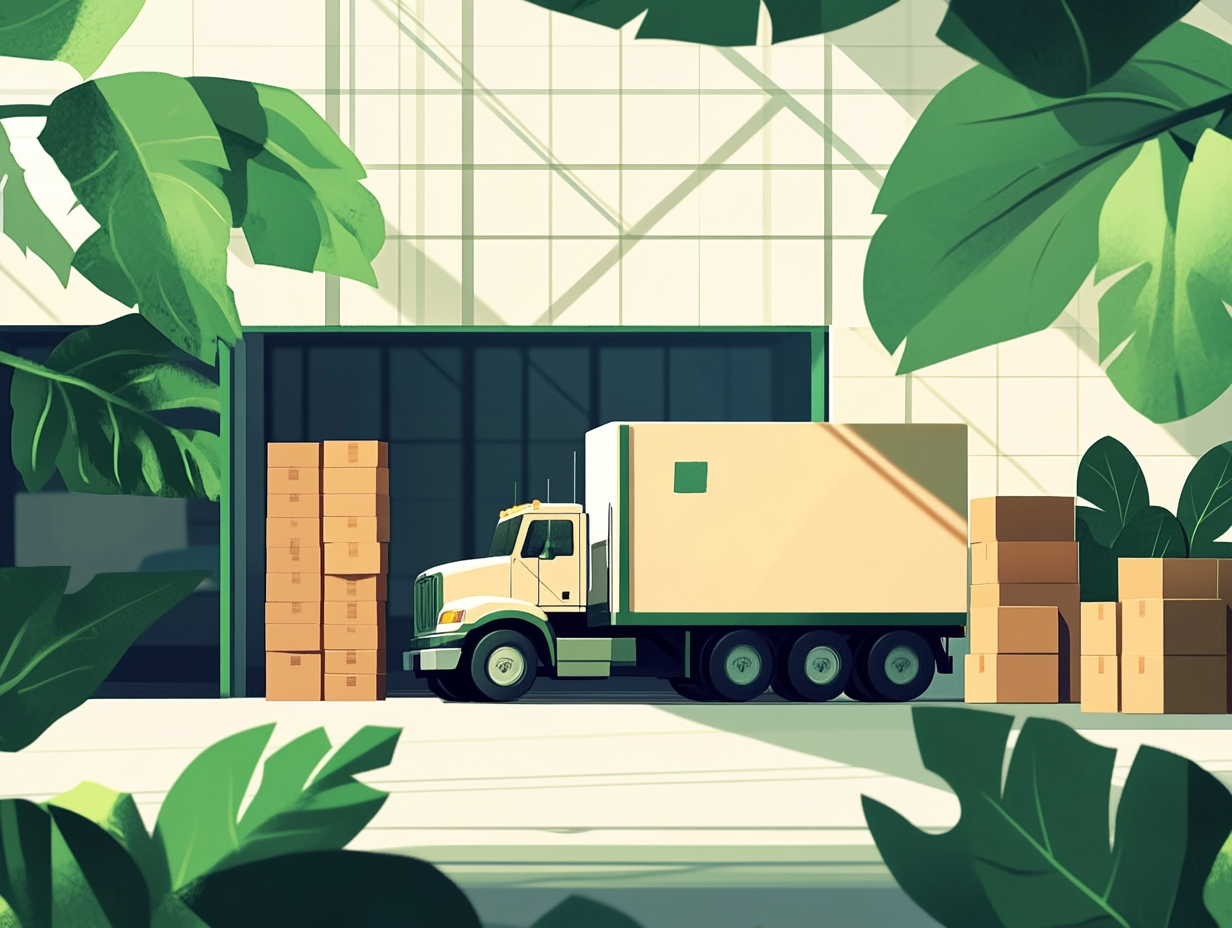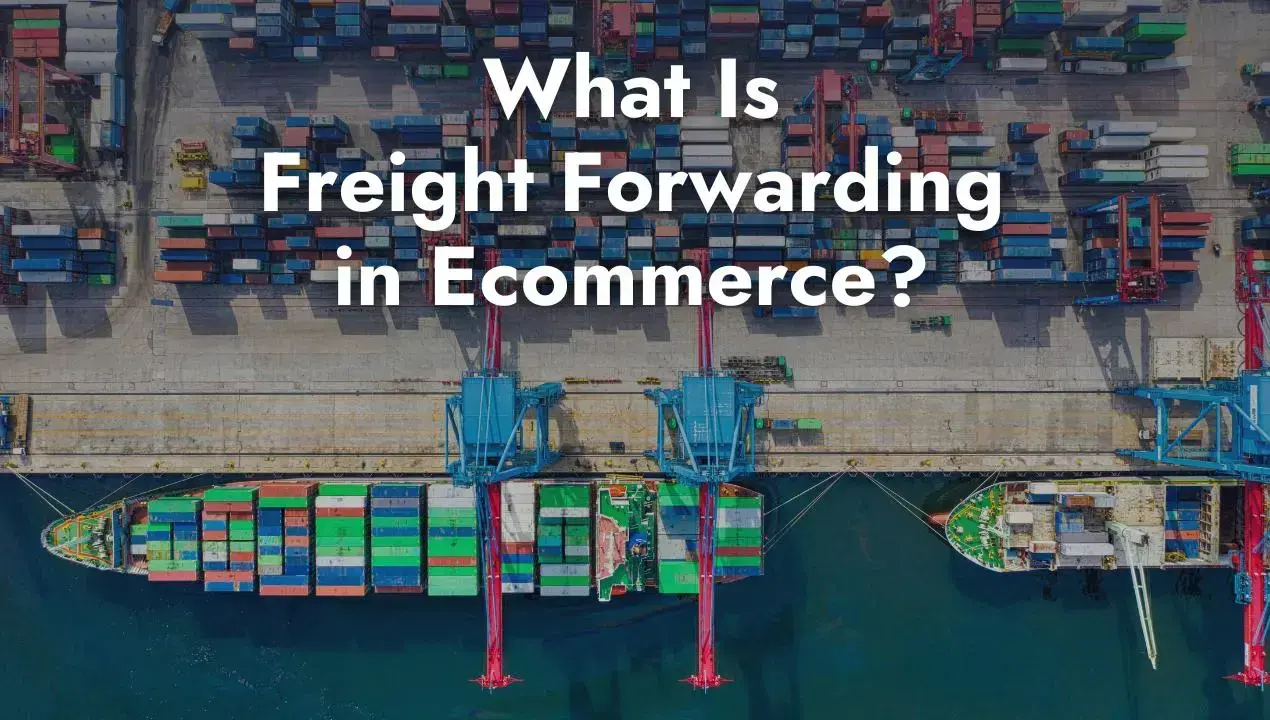Share this
Decoding Out for Delivery: Insights for Last-Mile Management
by Shipfusion Team on Nov. 29, 2024

When customers see “Out for Delivery,” they often assume the package will arrive imminently. Yet, in reality, this step depends on a web of logistics variables like route efficiency, weather, and volume, all managed within the constraints of the last-mile delivery phase.
In this article, we’ll break down the "Out for Delivery" status in detail, exploring what it really means, the logistical processes behind it, and common factors that can impact its reliability. By understanding the nuances of last-mile delivery, businesses can better manage customer expectations, refine their operational efficiency, and strengthen customer trust. We’ll also look at strategies companies use to optimize this final stage and how tracking technology has redefined customer engagement and satisfaction.
What "Out for Delivery" Really Means
When a package is marked "Out for Delivery," it’s left the local distribution center and is on the way to the customer. It’s a culmination of the entire fulfillment process, which requires coordination between logistics managers and quality control and customer service teams.
For customers, “Out for Delivery” represents anticipation and a sense of security that their package is close, though it doesn’t always pinpoint the exact arrival time. This uncertainty often results in consumers repeatedly checking tracking pages, highlighting the emotional investment tied to their purchases, especially when the item is time-sensitive, like a gift or an essential product.
Where "Out for Delivery" Fits Into the Delivery Journey
Understanding the stages leading up to "Out for Delivery" can offer a more comprehensive view of the delivery process and its impact on customer satisfaction.
1. Order Reception
Customers begin the delivery process by placing their order through an ecommerce platform. Order reception systems must be efficient and capable of handling high volumes to ensure no order goes unprocessed.
2. Order Processing
Processing includes verifying payment, checking inventory, and organizing orders for shipment. Efficient processing minimizes delays and avoids potential issues, particularly by using real-time inventory tracking to prevent backorders.
3. Fulfillment
During fulfillment, the order is picked, packed, and prepared for shipment. Advanced warehouse technologies such as robotics and automated sorting streamline this step, ensuring speed and accuracy.
4. Final Mile Delivery
The final mile is the last step, where “Out for Delivery” comes into play. Factors like routing, customer communication, and flexibility are crucial in this stage to meet customer expectations.
Does "Out for Delivery" Guarantee Same-Day Arrival?
Seeing the status "Out for Delivery" often raises expectations of imminent arrival, but in reality, it doesn’t necessarily mean a package will arrive the same day. This phase, while marking the final leg of the journey, is subject to various operational and situational factors that can impact delivery timing, even after the package has left the local distribution center. Understanding these factors can help businesses set realistic expectations for their customers, reducing frustration and fostering greater satisfaction.
Key Variables Influencing Delivery Timing
Several logistical and environmental variables influence whether an “Out for Delivery” package arrives on the same day:
Delivery Route and Scheduling
Once packages are marked as “Out for Delivery,” drivers typically follow a pre-determined route, delivering packages based on factors such as location density and delivery priority. Routes are optimized for efficiency, with drivers often carrying dozens, or even hundreds, of packages. Depending on the customer’s position along the driver’s route, a package may be delivered early in the day or late in the evening. This means that even if a package is “Out for Delivery,” its position in the driver’s queue can affect arrival timing.
Traffic, Weather, and Unexpected Delays
Road conditions play a crucial role in determining whether a package will arrive on time. Heavy traffic, road closures, or poor weather conditions can significantly slow down delivery vehicles. In urban areas, congestion and parking limitations can further complicate last-mile logistics, while in rural areas, long travel distances and challenging terrain can cause delays. Severe weather, from rainstorms to snow, may not only slow down drivers but also create unsafe conditions that force delivery postponements. All these factors can create delays even for packages marked as “Out for Delivery.”
Type of Delivery Service Selected
The type of shipping option chosen at checkout—such as standard, expedited, or same-day delivery—affects how quickly a package moves through each delivery stage. Higher-cost shipping options generally prioritize faster delivery timelines, with packages often being placed earlier in the delivery sequence. By contrast, standard shipping may take longer, even once the package is “Out for Delivery.” For urgent deliveries, choosing a premium option can help ensure timely arrival, though standard services may still face unforeseen delays.
Volume of Packages
During high-demand periods, such as holidays or major sales events, carriers experience a significant increase in package volume. Drivers have to navigate heavier workloads, which can extend delivery times across all shipments. A package marked “Out for Delivery” in December, for example, may have a different arrival time expectation compared to one delivered during a low-demand period, as drivers balance the surge in deliveries and adhere to prioritized time frames for certain shipments.
Factors That Can Delay Delivery After "Out for Delivery"
- Lack of Proof of Delivery: Situations where no one is available to receive the package can lead to delays. Clear communication with the customer is essential in such cases.
- Delivery Exceptions: Unexpected issues such as vehicle breakdowns or weather can cause delays. Transparency in communicating these issues can help maintain customer trust.
- Access Issues at the Delivery Location: Locked gates, construction, or incomplete addresses can hinder delivery. Ensuring customers provide accurate address details during checkout minimizes these delays.
- Communication Breakdowns: Miscommunication, whether due to unclear delivery time frames or misunderstanding by the customer, can result in delays. Clear communication between the logistics team and the customer is essential.
How Tracking Technology Enhances the "Out for Delivery" Experience
Once a package is marked "Out for Delivery," real-time tracking allows consumers to monitor progress. This visibility improves the customer experience, offering them peace of mind and the ability to plan for the package’s arrival. GPS-enabled tracking further enhances accuracy and ensures timely updates.
Strategies to Improve Efficiency During "Out for Delivery"
Companies looking to optimize the "Out for Delivery" stage can leverage several strategies:
- Optimized Route Planning: Using smart route planning software to shorten delivery routes, enhancing overall efficiency.
- Driver Training: Training drivers on effective communication can help ensure seamless interactions with customers.
- Address Accuracy: Encouraging accurate address entry minimizes access issues and reduces last-minute delivery complications.
Get Packages Out for Delivery Faster with Shipfusion
Navigating the complexities of last-mile delivery requires a reliable partner equipped with advanced logistics capabilities. Shipfusion brings 99.9% order accuracy, proprietary software, and real-time reporting to optimize every step of your delivery journey, from order reception through to "Out for Delivery." With dedicated account managers and 1,000,000 square feet of strategically located warehouse space, Shipfusion empowers businesses to meet high customer expectations without compromising quality. Ready to elevate your delivery operations?
Connect with Shipfusion today and see how our tailored solutions can transform your logistics into a competitive advantage.
Share this
You May Also Like
These Related Articles

What Is Freight Forwarding In Ecommerce?

Companies Who Don't Offer Free Shipping But Succeed Anyway

Does Weight Affect Shipping Delivery Time? Here’s Your Answer
- April 2025 (23)
- March 2025 (26)
- February 2025 (26)
- January 2025 (37)
- December 2024 (16)
- November 2024 (23)
- October 2024 (22)
- September 2024 (27)
- August 2024 (9)
- July 2024 (8)
- June 2024 (5)
- May 2024 (8)
- April 2024 (8)
- March 2024 (6)
- February 2024 (6)
- January 2024 (5)
- December 2023 (3)
- November 2023 (3)
- October 2023 (5)
- September 2023 (4)
- August 2023 (2)
- July 2023 (1)
- June 2023 (4)
- March 2023 (2)
- October 2022 (1)
- September 2022 (5)
- August 2022 (4)
- July 2022 (7)
- June 2022 (4)
- May 2022 (4)
- April 2022 (6)
- March 2022 (2)
- February 2022 (1)
- January 2022 (3)
- December 2021 (2)
- November 2021 (4)
- October 2021 (2)
- September 2021 (5)
- August 2021 (4)
- July 2021 (4)
- June 2021 (3)
- May 2021 (2)
- April 2021 (3)
- March 2021 (3)
- February 2021 (3)
- January 2021 (2)
- December 2020 (4)
- November 2020 (2)
- October 2020 (4)
- September 2020 (2)
- July 2020 (5)
- June 2020 (4)
- May 2020 (2)
- April 2020 (2)
- March 2020 (4)
- February 2020 (1)
- December 2019 (1)
- May 2018 (1)
- March 2018 (2)
- February 2018 (3)
- January 2018 (3)
- November 2017 (3)
- July 2017 (4)
- March 2017 (3)
- February 2017 (5)
- January 2017 (3)
- December 2016 (4)
- November 2016 (6)
- October 2016 (6)
- October 2015 (1)
- September 2015 (1)
- June 2015 (3)
- May 2015 (3)
- August 2014 (1)
- July 2014 (1)
- March 2014 (1)
- February 2014 (1)